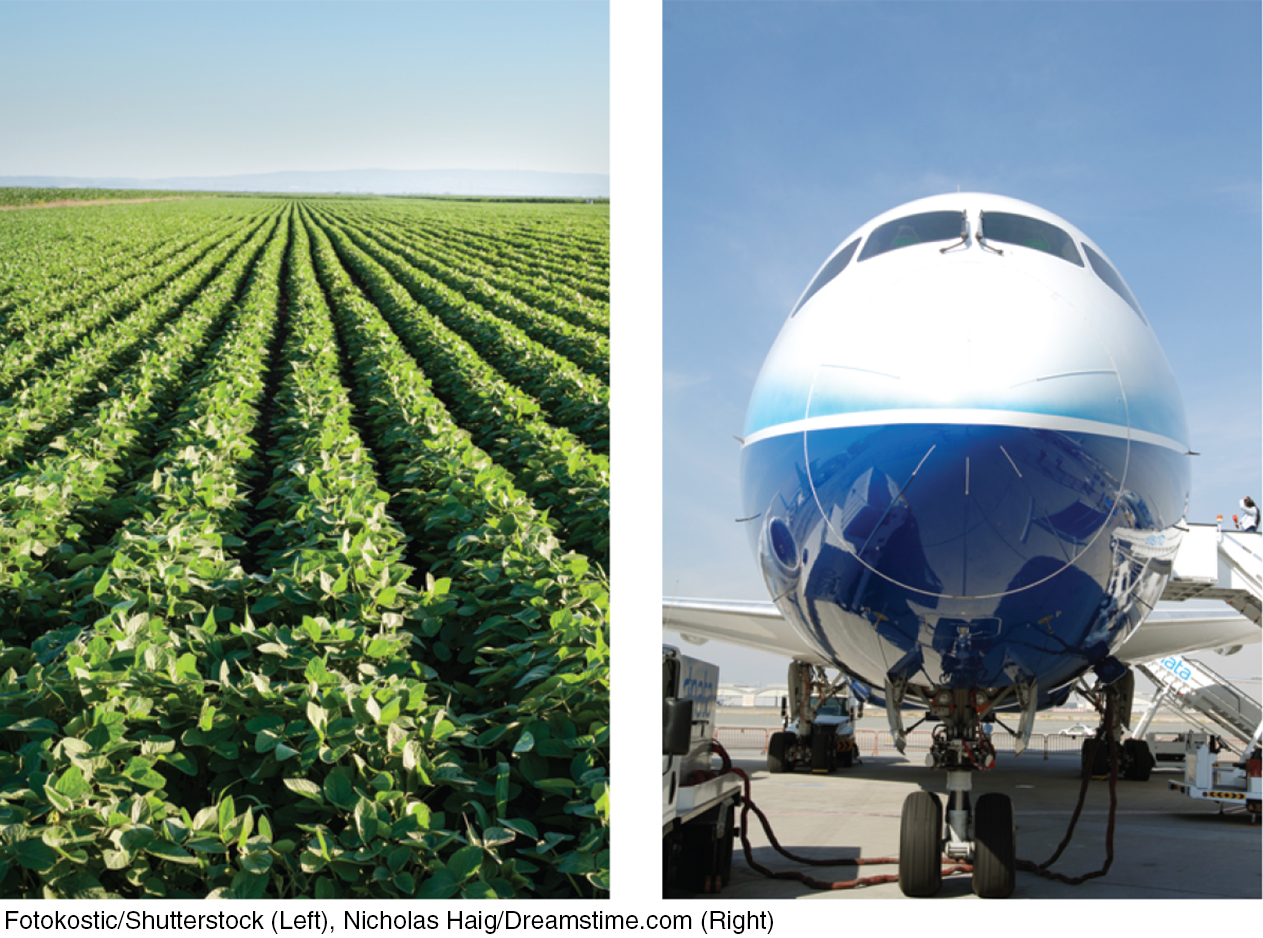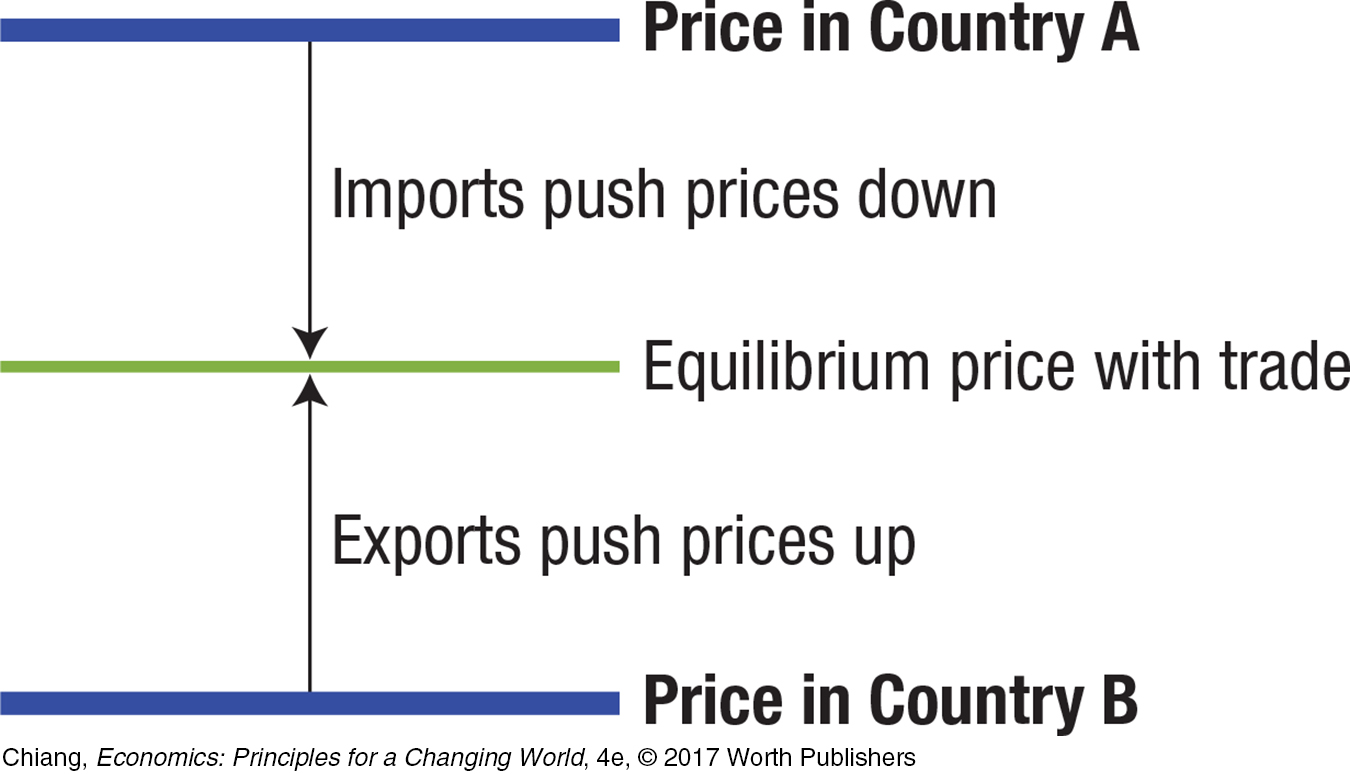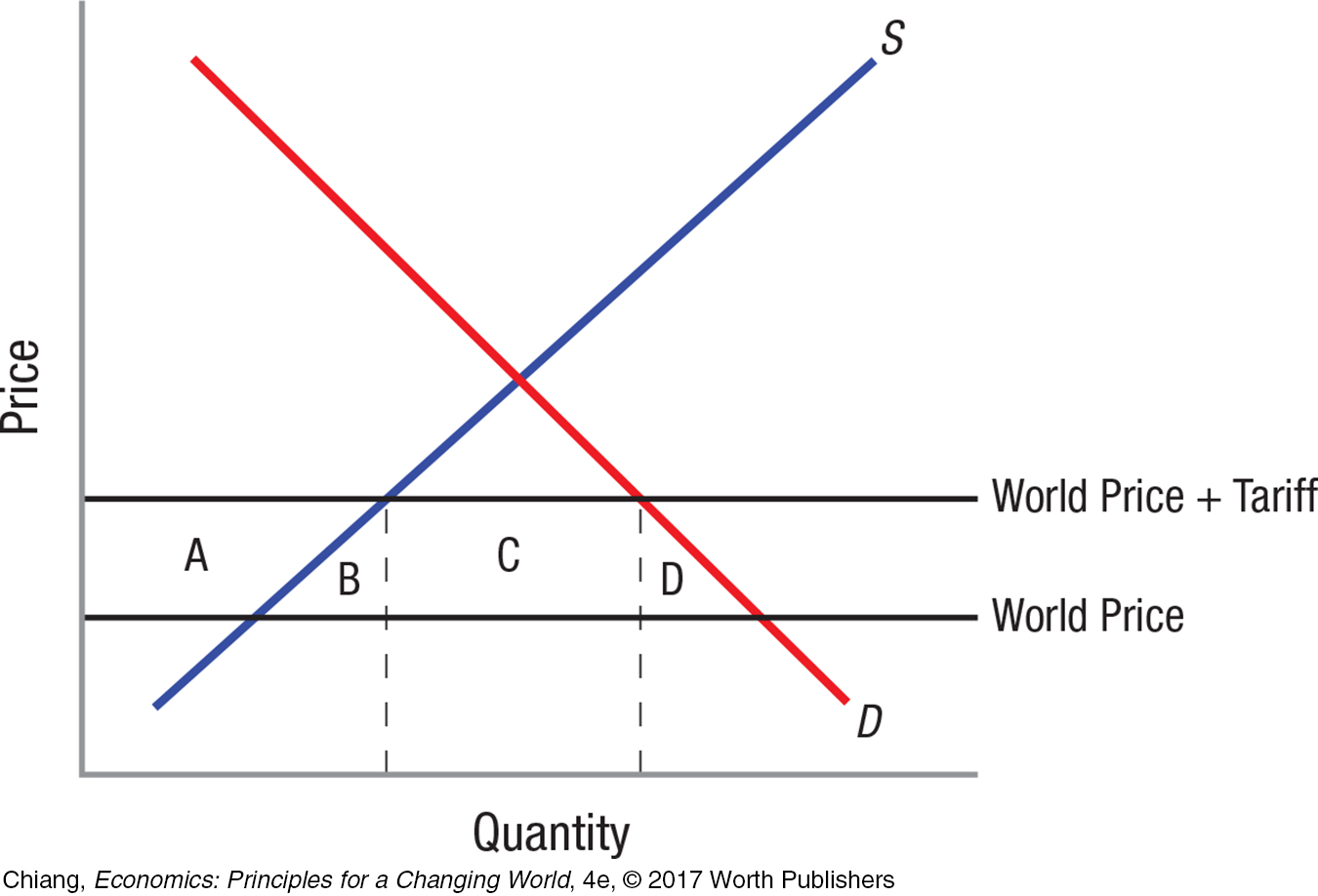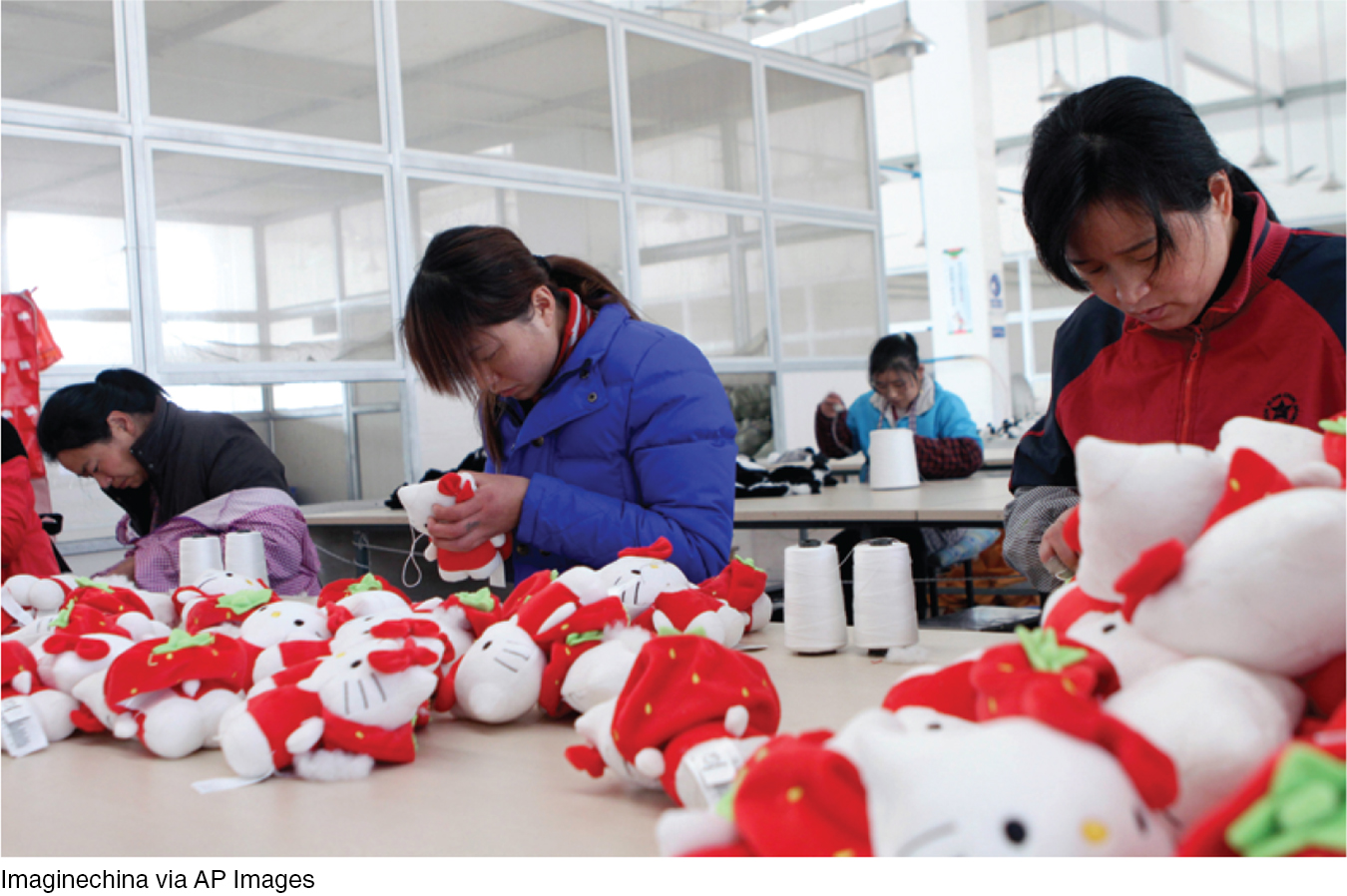chapter summary
chapter summary
Section 1 The Gains From Trade
26.1 Absolute advantage: Occurs when one country can produce more of a good than another country.
Comparative advantage: Occurs when a country can produce a good at a lower opportunity cost than another country.

The United States has a comparative advantage in both soybean production (due to an abundance of fertile land) and commercial aircraft production (due to an abundance of technology and human capital).
26.2 Trade is a positive-
Section 2 The Terms of Trade
26.3 The terms of trade determine the prices of imports and exports. When countries trade many commodities, the terms of trade are defined as the average price of exports divided by the average price of imports.
26.4 The Effect of Trade on Prices
Before trade, the prices charged for one good may be different in the two countries. The country with the lower price is likely to export the good; greater demand for that country’s good pushes prices higher. The country with the higher price is likely to import the good; lesser demand for that country’s good pushes prices lower. Market forces therefore push prices toward an equilibrium under free trade.

26.5 Tariffs are a tax on imports. They raise the domestic price of the good to the world price + tariff.
Winners: Domestic producers gain area A. Government gains area C in tariff revenues.
Losers: Domestic consumers lose areas A + B + C + D due to higher prices.
Net Loss: Areas B + D (deadweight loss from the tariff)
Quotas are an alternative to tariffs that directly restrict the quantity of imports. Quotas have a similar effect on prices as tariffs, except no tariff revenue is generated.

Historically, trade barriers have been high. In the 1930s, the Smoot-
Section 3 Arguments Against Free Trade
26.6 Many strong arguments against free trade exist. In each case, trade protection in the form of a tariff, quota, or subsidy is sought to protect the domestic industry.
Infant industry argument: States that a new industry requires protection to survive against established foreign competition. The problem is determining when these industries mature.
Antidumping argument: Dumping occurs when a foreign firm sells its goods below cost or at a price below what it charges in its domestic market.
Key industries argument: States that a country must be able to rely on its domestic industries for critical goods such as food, oil, steel, and defense equipment in times of conflict when trade might not be possible.

Protection Against Cheap Labor Argument: Argues that domestic workers need to be protected from cheap foreign labor. Most economists estimate that the benefits from lower-
26.7 Environmental degradation argument: States that countries producing mass goods allow their environments to deteriorate. However, studies show that as countries develop and incomes grow, demand for environmental protection rises.

26.8 Exploitation of foreign workers argument: Argues that trading with developing countries where wages are low and working conditions are deplorable exploits workers in these countries. But restricting trade would probably do more harm than good. Trade may be their only chance to grow and improve their standard of living.
